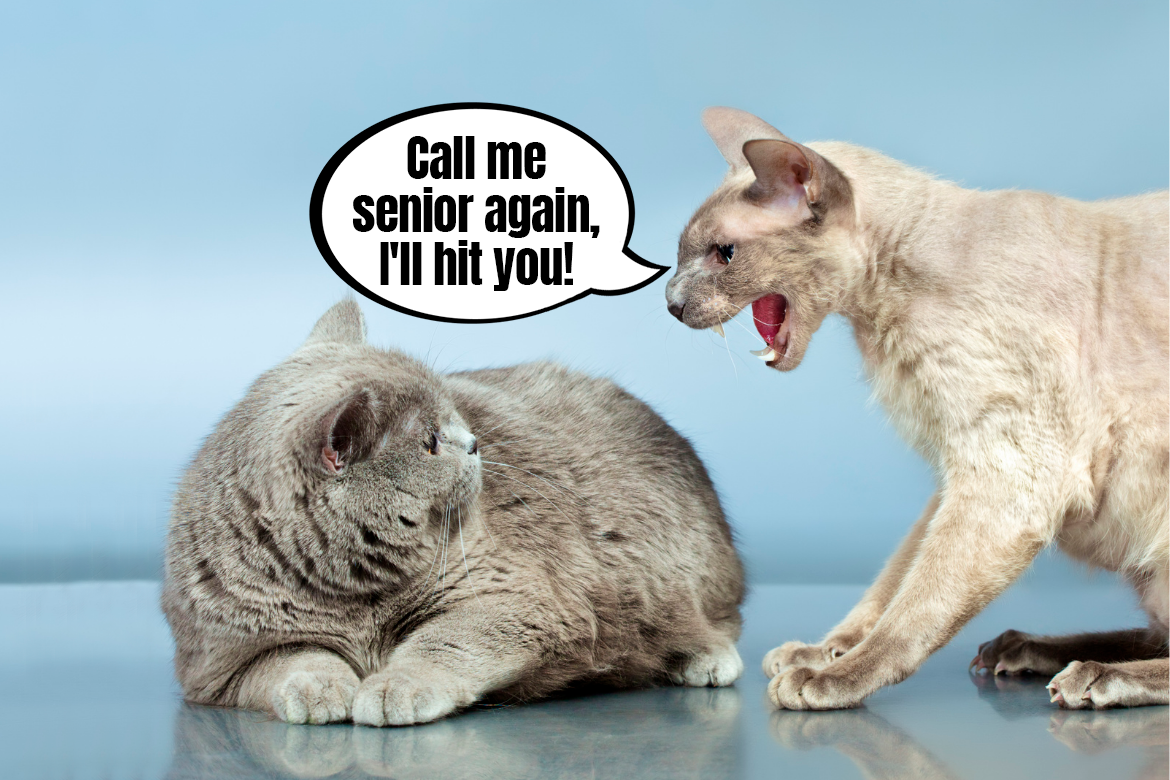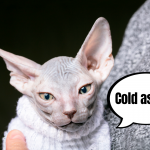If the decision was up to cats and their Guardians, the floofy friends would definitely be immortal and always by their favourite hooman’s side. But before a wizard cat finds the fountain of youth, cats have to grow up and get old just like all the other mortals on Earth. But when exactly do they reach their adult age or become feline grandparents? Today we’re searching for an answer and hoping you can join us in the search, fabCats. Let’s start!
How long do cats live?
Contrary to dogs, whose lifespan is strongly dependent on their size, genes, breed traits and potential health issues, for cats the “average” life span is a little easier to predict. Excluding the external factors, most cats can live besides their hooman Guardians for around 14-18 years, though numbers below and above that scale happen quite often. There are, of course, some record holders out there who have passed the 20 year mark a while ago and are still going strong – there have been cats who lived for 30-38 years. We’re sure they knew how to use their 9 lives to the fullest 🙂
The most important criterion that predestines a cat’s lifespan is their general living situation. Though there are some serious health issues that can happen to both outdoor, homeless cats and those who came from a good breeding situation, living in a caring home, there is no way of denying the facts – a cat who spends their entire life on the street, living in basements and parks, eating whatever they can get, trying to avoid dangers from everywhere and not having a proper medical help won’t be likely to live up to their 18th birthday. Cats like them often don’t make it to their first 10 years, and that’s if they even manage to fight all the adversities coming their way as they are kittens born on the street.
What does a cat’s life expectancy depend on?
A cat’s life expectancy is largely dependent on their good living conditions and the care that hoomans provide for their pets. A proper diet, adequate medical prevention and assistance, as well as physical activity at home, lack of major stress factors, having their biological needs properly met and not being able to go outside freely (unless it’s a walk on a leash or in a secured space) are just some of the details that, though my seem like obvious, can actually make a huge difference. The life expectancy of a cat is also improved by them getting spayed or neutered (as the procedure not only prevents unplanned cat pregnancies, but also helps to avoid or completely eliminate some difficult health issues like pyometra for female cats or testicular cancer for male cats).
A second category of criteria for cat’s overall life expectancy are genetic factors – purebred cats can run into some health issues more often, as some specific breeds can be prone to some specific issues, but they can also be the victims of wrong pairings within the breeding program or kittens from unregistered, pseudo breeding facilities where the pairs are often not mixed responsibly and there are increased risks for some health issues because of that. Of course, it’s not only the issue for purebred cats – some individuals can be simply more prone to become ill than their cat buddies and, just like with people, they can simply have more health issues regardless of their age, breed or life circumstances.
Kitten, an adult or a senior cat – how old is your cat?
All right, fabCats, it’s nice to know the theory but how to calculate your cat’s age in practice? When we look into their medical records, we can see they’ve been alive for 2, 5, 8 or 12 years, but how does it translate into cat years? When do our cats become adults and when are they considered senior citizens? As it turns out, the conversion system isn’t as easy as many believe – not every year of a cat’s life equals to 7 human years.
As young kittens, cats grow up really fast – their bodies are made to allow them to survive on their own, which is why at around 5-6 months they can already be ready to reproduce. But that’s just a reproductive maturity – mentally they are still kittens. Even their body size at around 8-12 months is not the full size of an adult cat – it’s believed that cats are growing up physically and mentally up to for the first 2 or even 3 years of their lives. With bigger breeds, such as the Maine Coon, the adolescence can be even longer.
To easily calculate from “cat” years to “hooman” years, the most common system to be used is the one where the first year of a cat’s life equals to around 15 “hooman” years (after a year, your cat is the typical teenager), the second year equals 9 “hooman” years, and every year after that equals to around 4 years. After 2 years of life, a cat’s like a typical 24 year old – an adult, who’s fully grown up in theory, but in practice may still be developing mentally and still has a lot to go through. At 3, they’re more like a 28 year old – still young, but more established, and once they turn 4, they are fully aware of themselves and their needs, like a 32 year old who has their life under control, likes stability, but is still open to having some fun.
Once a cat reaches their 9th birthday, their age is equal to around 52 human years. At this point we can slowly treat that cat as a senior, but if their health is in good shape, they’re definitely not limited in their abilities just yet. There’s no point at which we can definitely say a cat’s 100% senior, but it’s always good to talk it over with your veterinarian to see if your cat needs more specific exams and preventative measures appropriate for a senior cat.
A sound mind in a sound body
To finish off, dear fabCats, we have a little reminder for you that can help your cats live their best lives. But let’s start with debunking a stereotype first.
It’s commonly believed that young animals (not just cats) are generally healthy and full of vigour – they have their whole lives ahead of them, don’t suffer from serious health problems and their vet visits are limited to some basic vaccinations. Unfortunately, this type of thinking is faulty and a “young cat” doesn’t always mean a “healthy cat”. Why? Because, just like with people, illnesses can occur in cats of all ages, regardless if they were bred by an experienced breeder and born with some specific genetic predispositions or if they are a plain domestic cat, saved from the streets, a shelter or any other organisation.
Cats have mastered the ability to hide their symptoms and pain and simply relying on observing their behaviour can lead to the cat Guardian missing some signs of illness. And if the cat is brought to the vet clinic a few years after their previous visit, some unexpected changes may become visible and be in such an advanced state, they seriously impact the cat’s life expectancy. And they could’ve been avoided if the cat was simply visiting the vet more often.
Here we arrive at a reminder for you. FabCats – prevention is the key to a long cat life! It’s because of regular blood tests, poop tests, teeth and heart check ups or USG and RTG screenings that the vets can find small lesions and worrisome changes and start treating them, which in turn can prolong a cat’s life by a few years. It’s not worth waiting up to a point when your cat needs a small procedure and just before it starts, the vet says your cat’s blood work is not good enough to put the animal under anaesthesia.
In one of our older articles, we’ve mentioned all preventative tests that are recommended for cats of all age. Go and give it a read, as there’s no such thing as too much information here.
And now a question to you, dear fabCats – what age are your cats right now? Are they in the crazy youngsters group, marching into their adult life, or maybe they’re a well-settled adult or seniors who dream of going on a kitty pension and a life on a comfy chair on the porch? Share your calculations in the comments.




